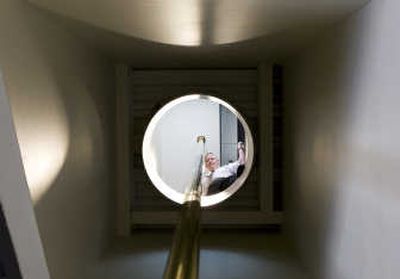Memo to firefighters: Take the stairs, please

SEATTLE – There won’t be many Seattle firefighters sliding down fire poles in the future.
Not after city officials took a look at the price tag for two new brass poles in the city’s newest fire station: $150,000 each.
Seattle is phasing out the historic staple of the firehouse, saying new safety features stressed by state regulation and other costs make them too expensive for future stations. They also argue that stairs serve just as well when it comes responding to calls.
The phaseout will mark the end of a firehouse feature romanticized in countless movies and television shows about firefighters.
“It’s been a part of tradition,” Assistant Department Chief John Nelsen said Friday. “People in tours still ask to see the fire pole and ask if we have a Dalmatian. There is no difference in response time.”
But the phaseout has ticked off some firefighters. “We’re frustrated with this change, and feel some of the reasons are disingenuous,” said Dallas Baker, a director for the Seattle Firefighters Union, Local 27. “They’re overstating the true costs.”
Elaine Fischer, a spokeswoman for the state Department of Labor and Industries, calls fire poles “old technology.”
“Generally speaking, they’re not safe. There is the inherent danger of having a hole in the floor. And you have the risk of firefighters landing on each other.”
Fischer said that during the 1990s, many cities across the country moved to phase out fire poles, and existing poles were retrofitted to have better safety standards, such as 3-inch-thick rubber platforms to cushion landings.
In 1996, the state prohibited poles in new fire stations, saying a nationwide agreement by people in the firefighting industry stressed higher safety standards.
The state rule came into play when Seattle decided to build the new station. The Fire Department, along with the city and the union, secured an exemption because of the size of the new station – nearly three stories tall.